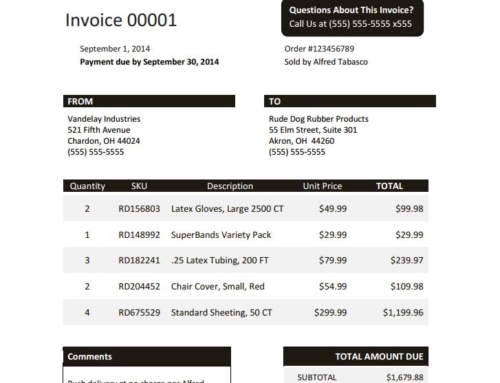How well is your accounts receivable strategy working? Do you feel like you’re putting in the work but not seeing the results you think you should be seeing? If so, you’re not alone. The point of extending credit to customers is to sell more, build relationships and realize the rewards of extending credit to customers, not create more work at the end of the sale; but this is often what happens. When you decide to sell on credit you’re accepting the large task of managing accounts receivable, a job that can consume much of your time and money if you’re not following best practices or using the right strategies and tools to manage the process.
YOUR CUSTOMERS KNOW YOU DON’T ENFORCE YOUR TERMS
If you do not contact customers about late payment until 30 days past the due date, they are not going to take you very seriously in the future. But, if you consistently remind them of upcoming due dates and then get in touch with the customer the day after an invoice becomes past due, they’ll know you are serious and hopefully this spurs them into action without too much additional work on your part. If you enforce consequences such as credit holds and late payment fees, your customers will know you mean business, and you will see a change in your accounts receivable metrics. Just be sure to think twice before deciding to include such consequences in your accounts receivable strategy.
YOUR STAFF DOESN’T UNDERSTAND BUSINESS CREDIT COLLECTIONS, CASH FLOW OR WORKING CAPITAL
Many companies, especially SMBs, do not have a dedicated A/R management team so they put the responsibility of collections on the shoulders of an office manager or part-time clerk. Whatever the case may be, you need to make sure they have the knowledge, training, and tools to be impactful every time they speak with a customer about payment. Check out our accounts receivable YouTube channel where we have educational webinars where your employees responsible for managing invoices can pick up best practices to help them become more effective in their efforts.
YOU DO NOT HAVE STANDARDIZED PROCESSES AND PROCEDURES
Do you have a standardized credit and collections plan? As explained in previous articles, this is a critical step in becoming more effective and reducing the amount of time and money spent on collections; especially when you use a system that helps you make sure those policies and procedures are carried out.
NOBODY “OWNS” CREDIT AND COLLECTIONS – ESPECIALLY IF YOU’RE A SMALL OR MEDIUM-SIZED BUSINESS
This goes back to the importance of a credit policy where you can define who is in charge of what to make sure nothing falls through the cracks and that best practices are being carried out.
YOUR STAFFING IS INADEQUATE
Many people come to us and ask, “How many employees do I need focused on credit collections to be successful?” there is no magic number or answer to this question, but there are some rules of thumb. We wrote a white paper to help you answer this question based on your specific business needs, revenue, and the number and complexity of your invoices.
YOU’RE USING DISCONNECTED AND MANUAL SYSTEMS
Many people come to us and ask, “How many employees do I need focused on credit collections to be successful?” there is no magic number or answer to this question, but there are some rules of thumb. We wrote a white paper to help you answer this question based on your specific business needs, revenue, and the number and complexity of your invoices.
The solution? You may want to consider accounts receivable management software, a proven way to eliminate process efficiencies and help collectors get more done with better results.




